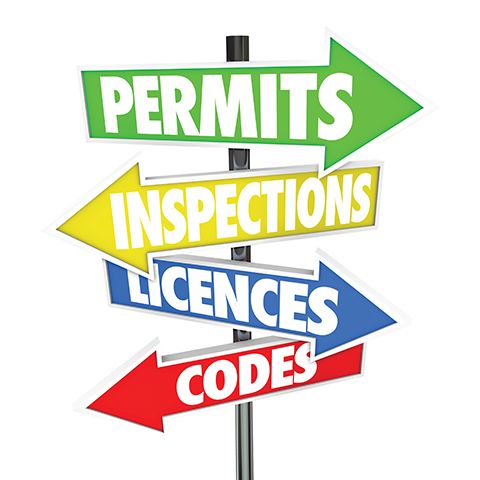
In general, the process to obtain a sign permit in Canada is becoming more detailed and complex. Image licensed under BigStockPhoto.com
One reason it remains very difficult for sign companies to navigate the permit process, however, is each municipality requires slightly different application information, in a slightly different format. It can take years to become familiar with their bylaws and requirements. Some cities require engineer-stamped drawings, for example, or an engineer’s commitment to a general review, while others require the inclusion of distances between the proposed sign and
the nearest bus stops, traffic signals and/or pedestrian corridors. And rules may constantly be updated and revised.
Also, multiple approvals are often required for a sign, involving transportation departments and heritage conservation authorities, for example. Some of these approvals are handled internally by the municipality, while others may need to be applied for separately. And in some circumstances, an application cannot be submitted before certain approvals are obtained in writing, which can add more time to the process.
Another issue is cost. Each municipality sets its own fees for sign permits and they can vary greatly. Some are based on construction value, some on sign area, while others are simply flat fees. If a sign company does not factor permit costs into its pricing for customers, then this may affect profit margins significantly.
For these reasons, again, it is important to make sure clients appreciate the importance of having a proper sign permit in place. It should be considered part of the project, not merely
an afterthought. Otherwise, any mistakes can become extremely costly. It is far less expensive to do everything right the first time. No one wants to pay to relocate an improperly installed ground sign!
Considering the complexity of sign permit applications and issuances, it may be no wonder some signmakers chose to bypass the process in the past, but as mentioned, times have changed and most municipal governments have become much more rigid in enforcing their sign bylaws’ policies.
Dealing with rejection
When a sign has been installed without a permit, the corresponding municipal department may issue a violation notice and/or fines. In some cases, the city will even remove the sign and charge the owner for both the removal and the subsequent storage. Further, if the enforcing department is aware of illegal signage at a particular site, it can refuse to issue any more permits to the property until the situation is rectified.
Upon receipt of a violation notice, there are typically two options for the sign’s owner: (a) apply for the permit immediately or (b) have the sign removed. The first step in this decision is to check if the sign would be allowed under the current bylaw. If so, then option (a) should work, but in addition to the permit application fee, violation fees may be due and an engineer’s review may be required.





